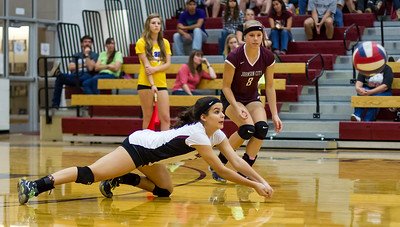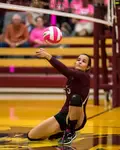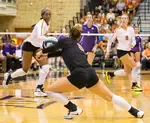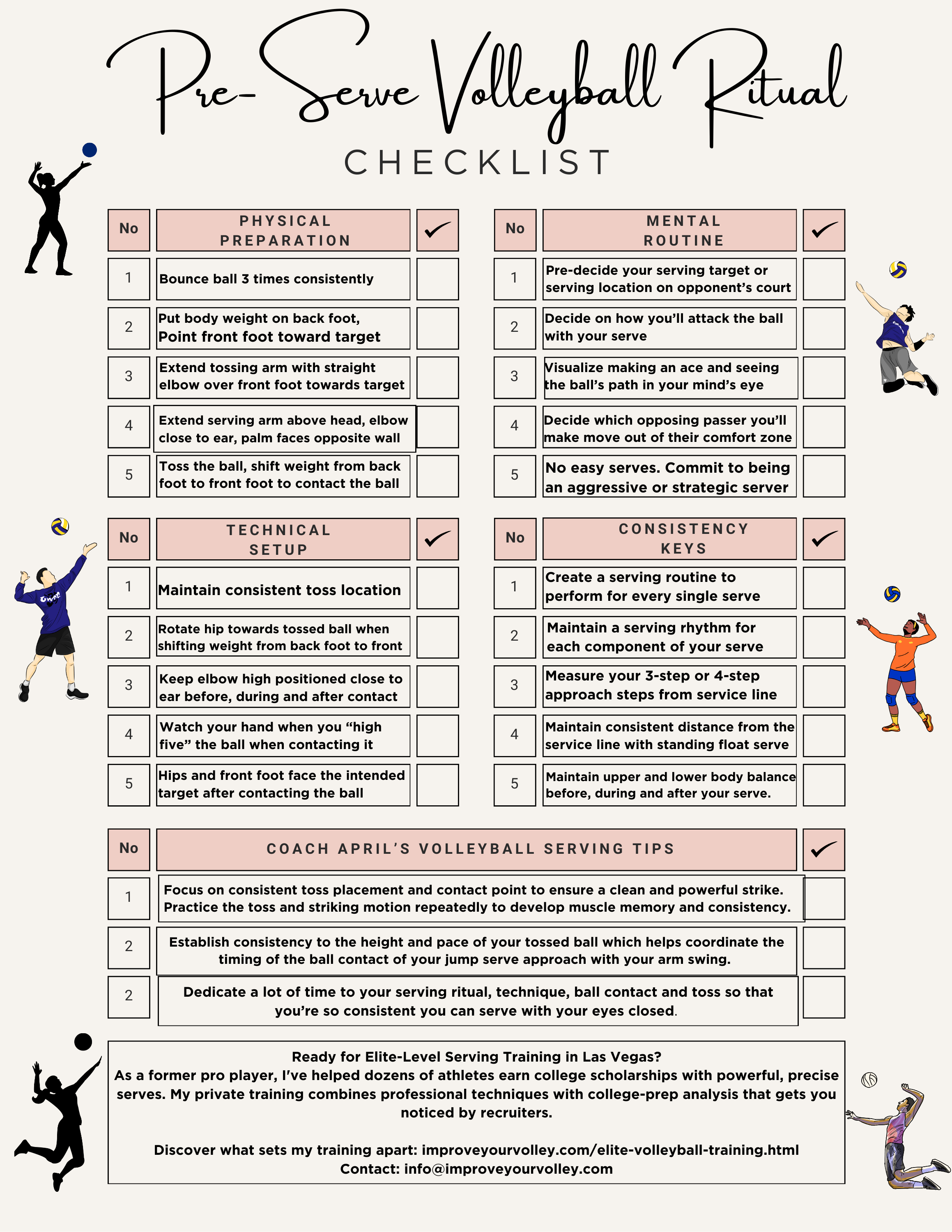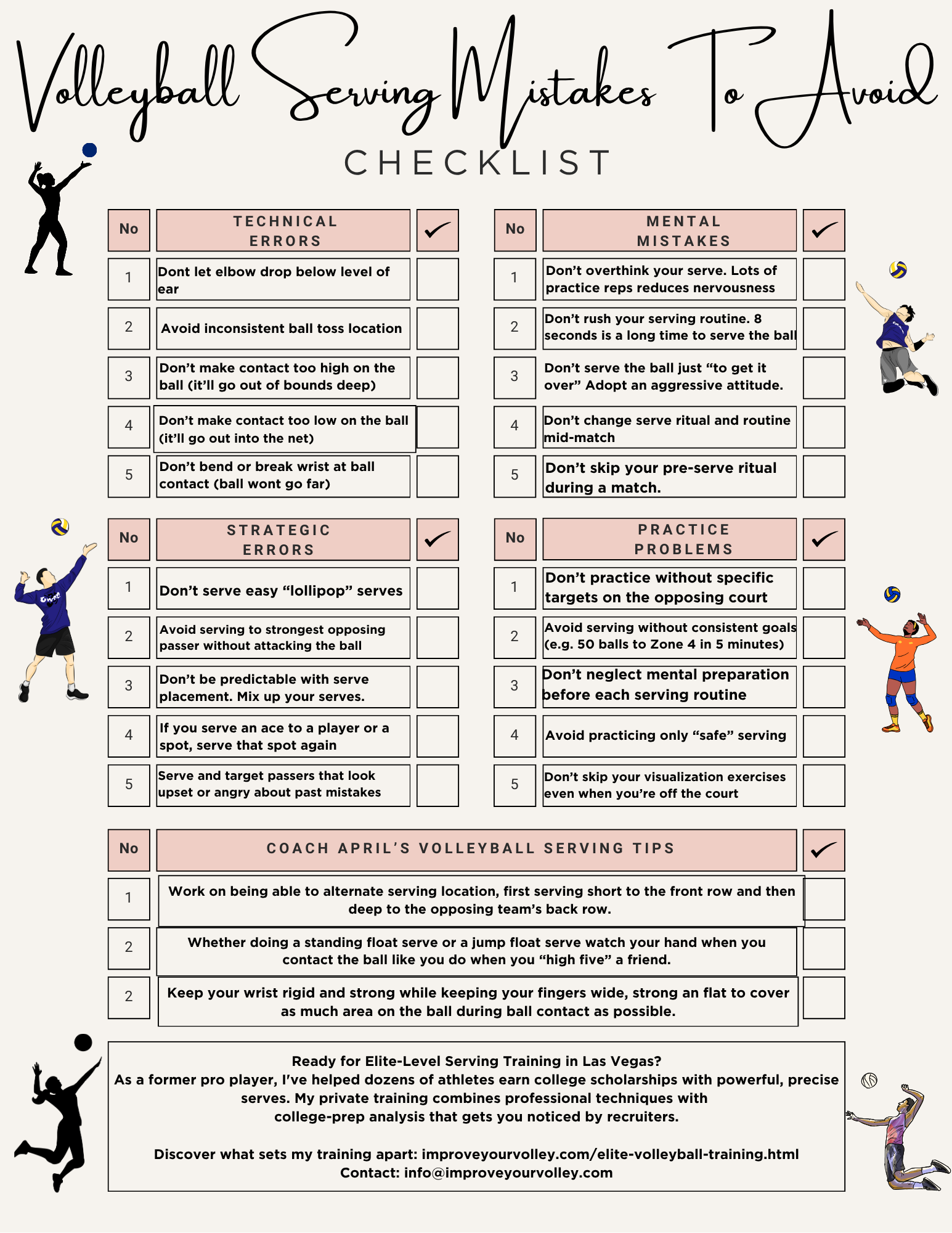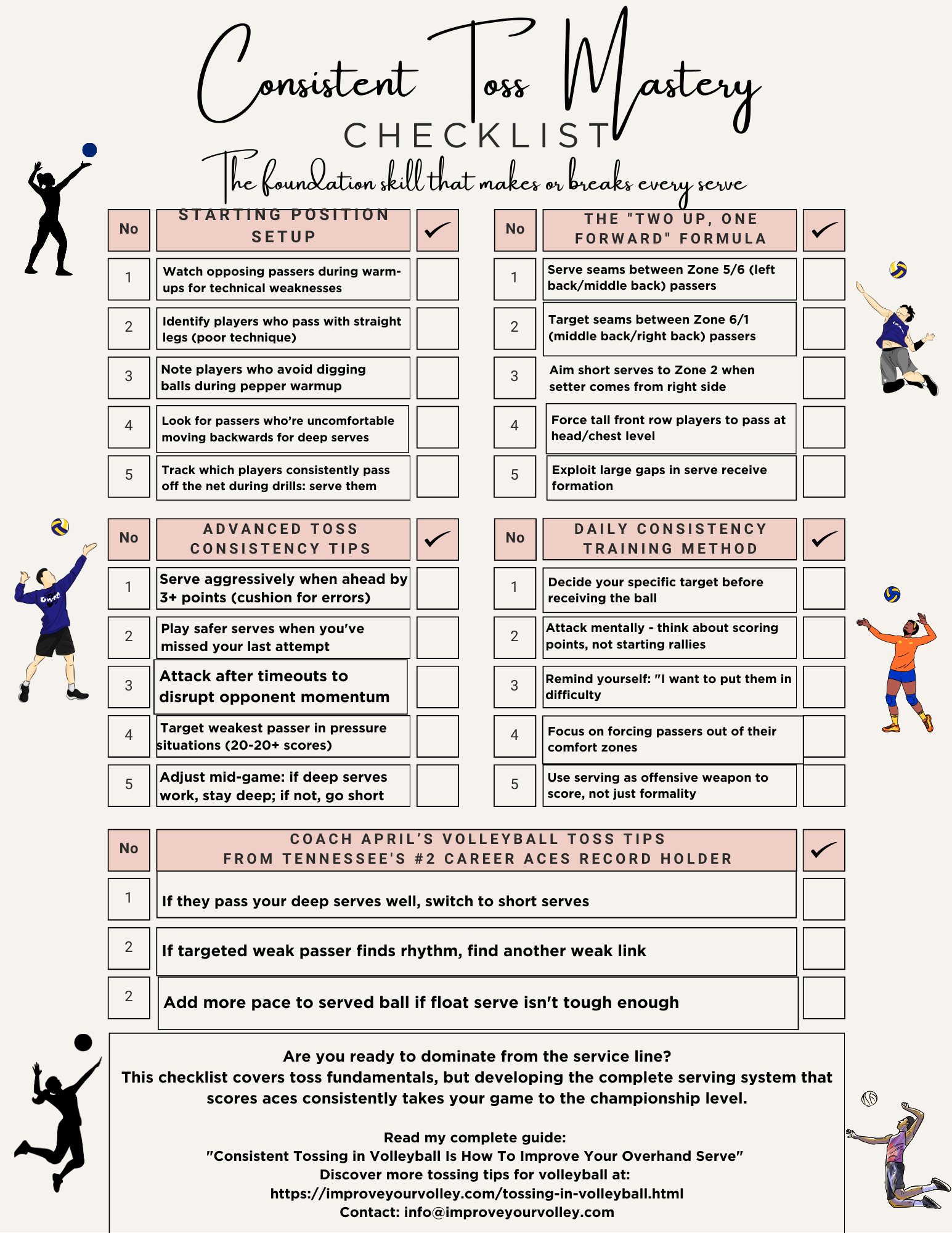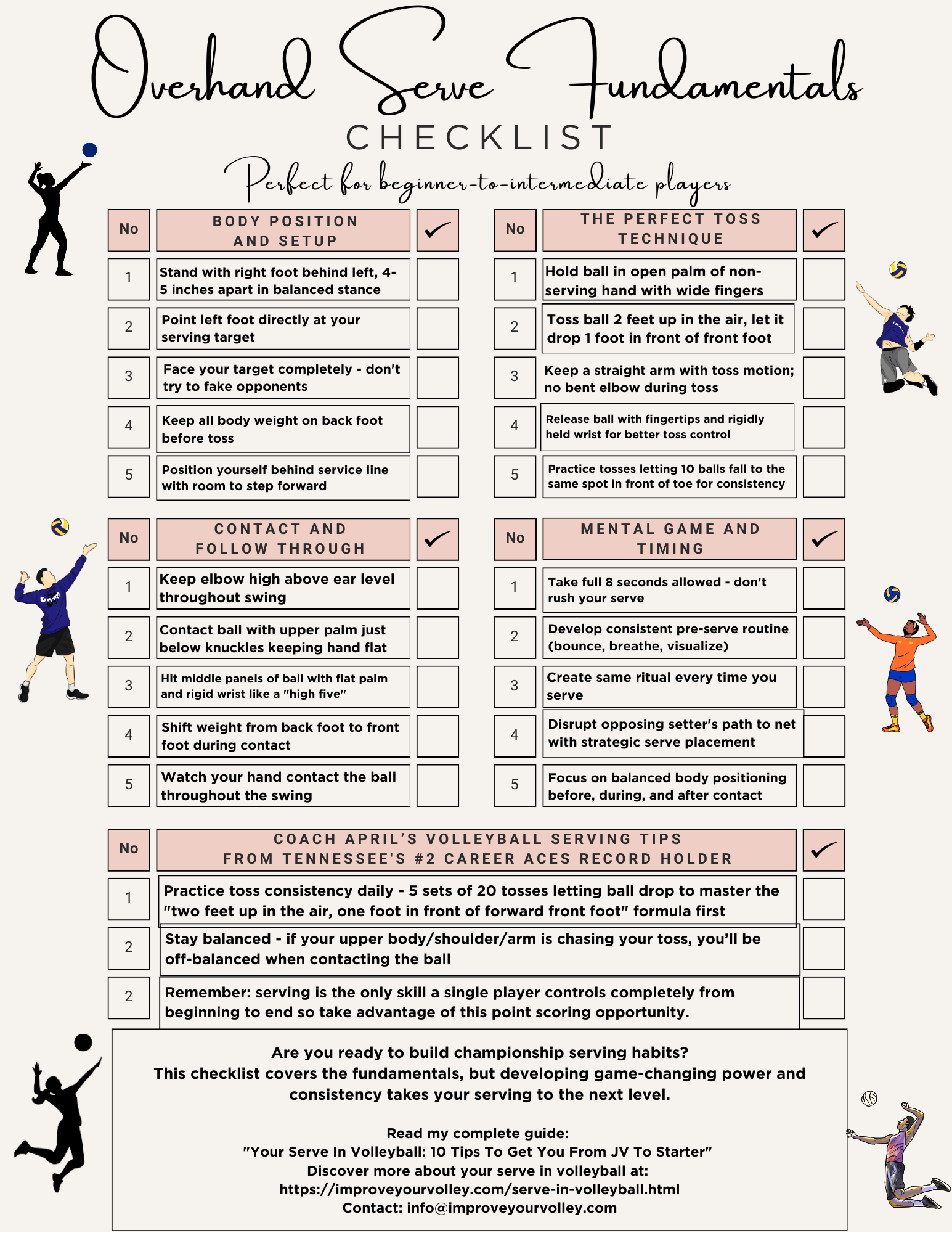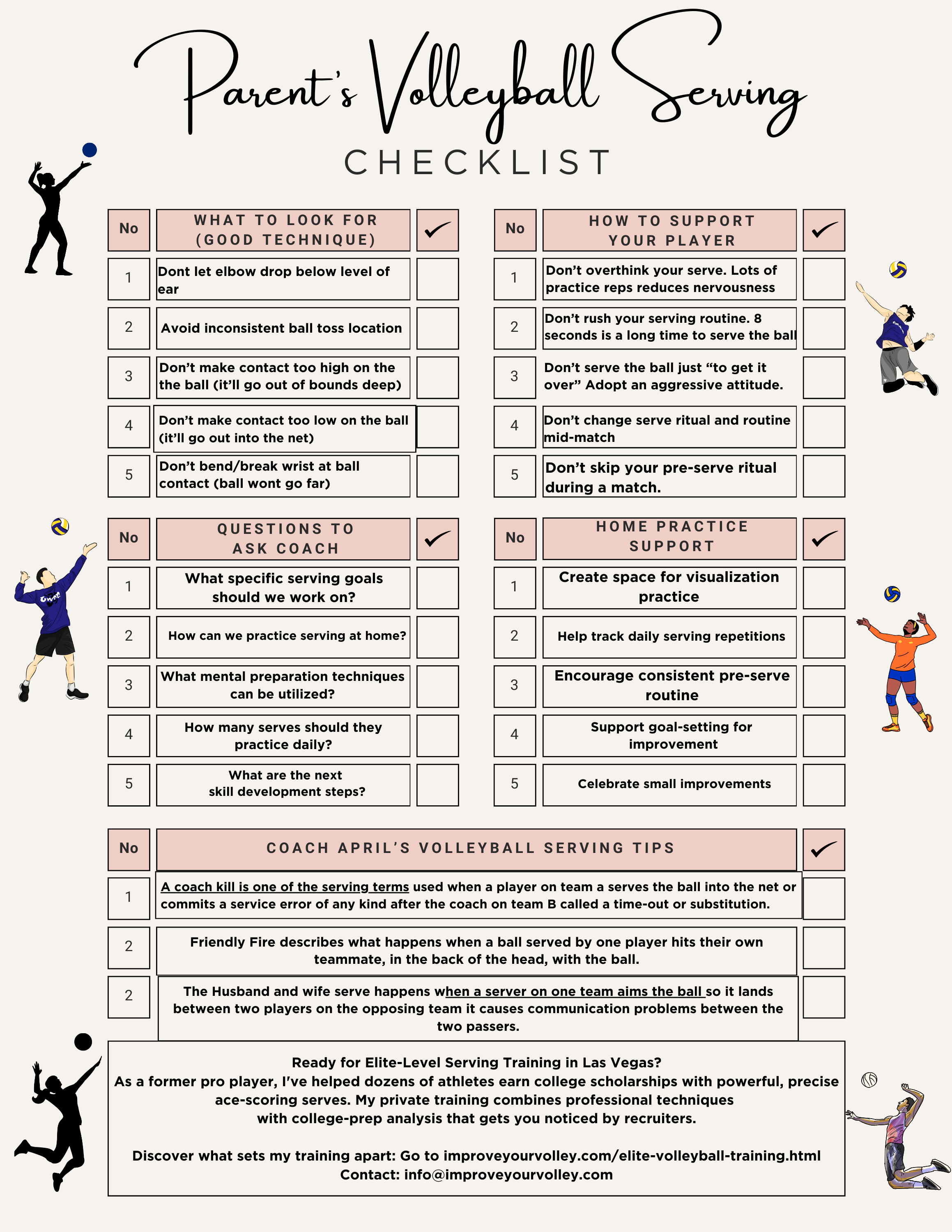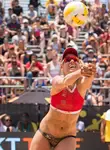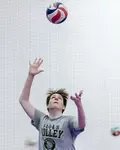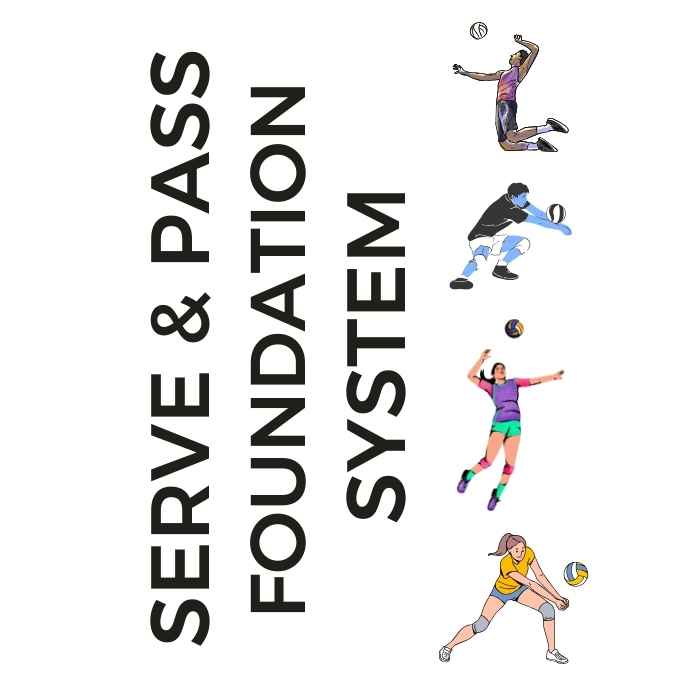
Serve + Pass Foundation System: The Complete Skills Arsenal The two-skill mastery system that transforms inconsistent players into the athletes coaches build their lineups around. Stop Struggling With The Two Most Important Skills In Volleyball!
- Improve Your Volleyball with Coach April
- Volleyball Shirts
- What Is the Function of The Libero In Volleyball
What's The Function Of Libero in Volleyball And Why Was It Created?
Discover the function of the libero in volleyball as they excel in serve receive, maintain defensive positions, and make accurate digs to keep the ball in play.
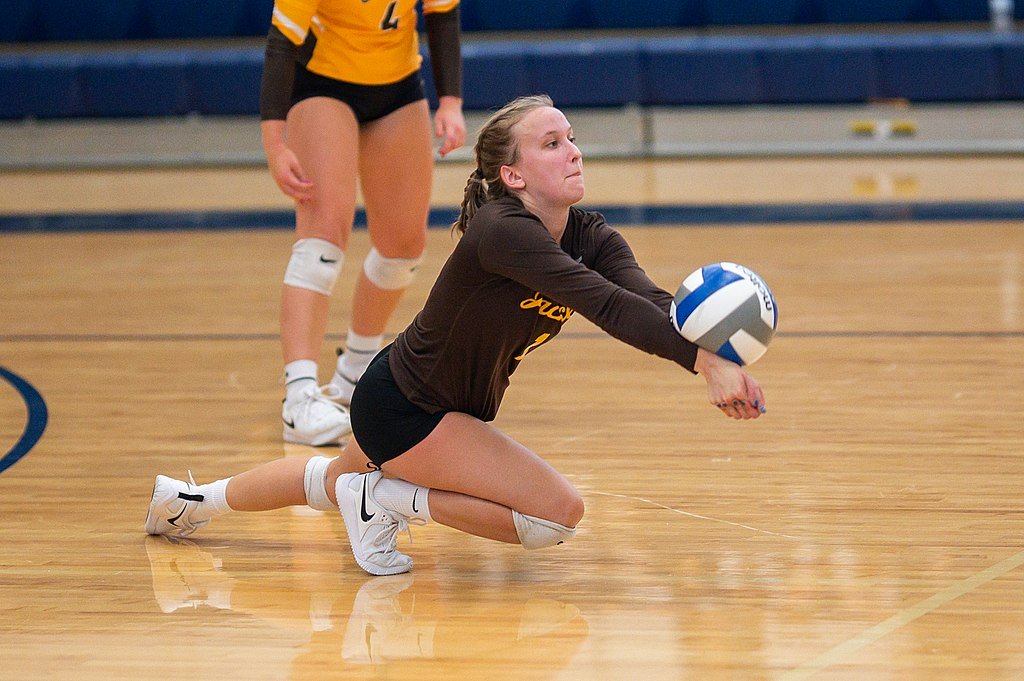 Discover the function of libero in volleyball as they excel in serve receive, maintain defensive positions, and make accurate digs to keep the ball in play. (photo Erik Drost)
Discover the function of libero in volleyball as they excel in serve receive, maintain defensive positions, and make accurate digs to keep the ball in play. (photo Erik Drost)The libero in volleyball is a specialized position known for their role as a defensive specialist on the team.
With specific responsibilities and restrictions, the libero's primary function is to excel in defensive skills such as digging, serving and passing.
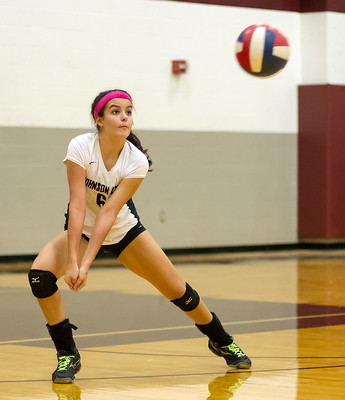 What's The Function Of Libero in Volleyball? The libero in volleyball is a specialized position known for their role as a defensive specialist on the team.
With specific responsibilities and restrictions, the libero's primary function is to excel in defensive skills such as digging, serving and passing.
(Ralph Arvesen)
What's The Function Of Libero in Volleyball? The libero in volleyball is a specialized position known for their role as a defensive specialist on the team.
With specific responsibilities and restrictions, the libero's primary function is to excel in defensive skills such as digging, serving and passing.
(Ralph Arvesen)They are the defensive quarterbacks and play a vital role in keeping the ball in play during rallies.
Ideally equipped with exceptional ball control and quick reflexes, the libero's main focus is on their defensive responsibilities, ensuring accurate passes to the setter and seamless transitions from offense to defense.
What's the function of the libero jersey in volleyball?
Volleyball regulations require the libero jersey to be a different color than that worn by their teammates.
The contrasting jersey color is an essential visual identifier for officials, coaches, and spectators to distinguish the libero on the court.
Why Is The Libero Jersey Color and Substitution Tracking Significant?
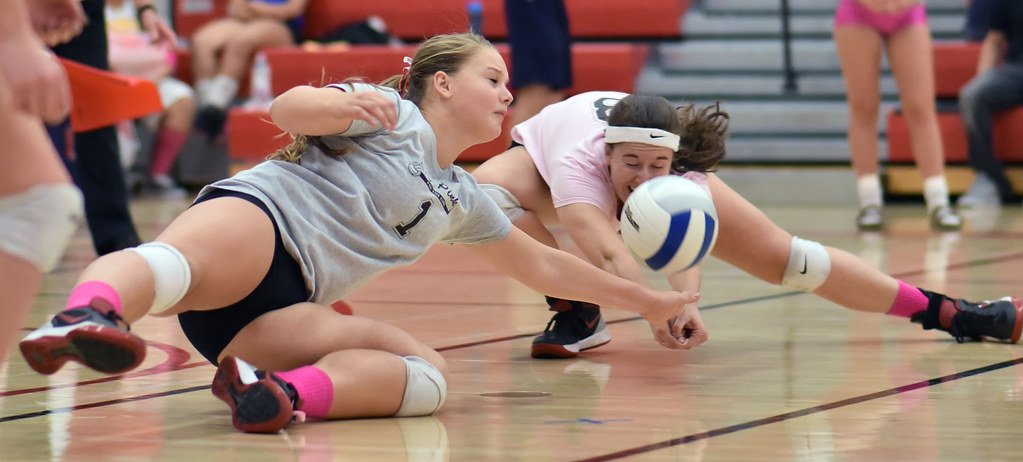 What's The Function Of Libero in Volleyball? The libero's jersey color aids in tracking their substitutions during the match. Since liberos can enter and exit the game without counting towards traditional substitution limits, the contrasting jersey color allows officials to visually track their movements and substitutions accurately
(AlCasephoto)
What's The Function Of Libero in Volleyball? The libero's jersey color aids in tracking their substitutions during the match. Since liberos can enter and exit the game without counting towards traditional substitution limits, the contrasting jersey color allows officials to visually track their movements and substitutions accurately
(AlCasephoto)1. Easy Identification:
This visual distinction helps referees, coaches, and fans quickly identify the libero's movements and understand their specialized role in the game.
2. Substitution Tracking:
The libero's jersey color aids in tracking their substitutions during the match. Since liberos can enter and exit the game without counting towards traditional substitution limits, the contrasting jersey color allows officials to visually track their movements and substitutions accurately.
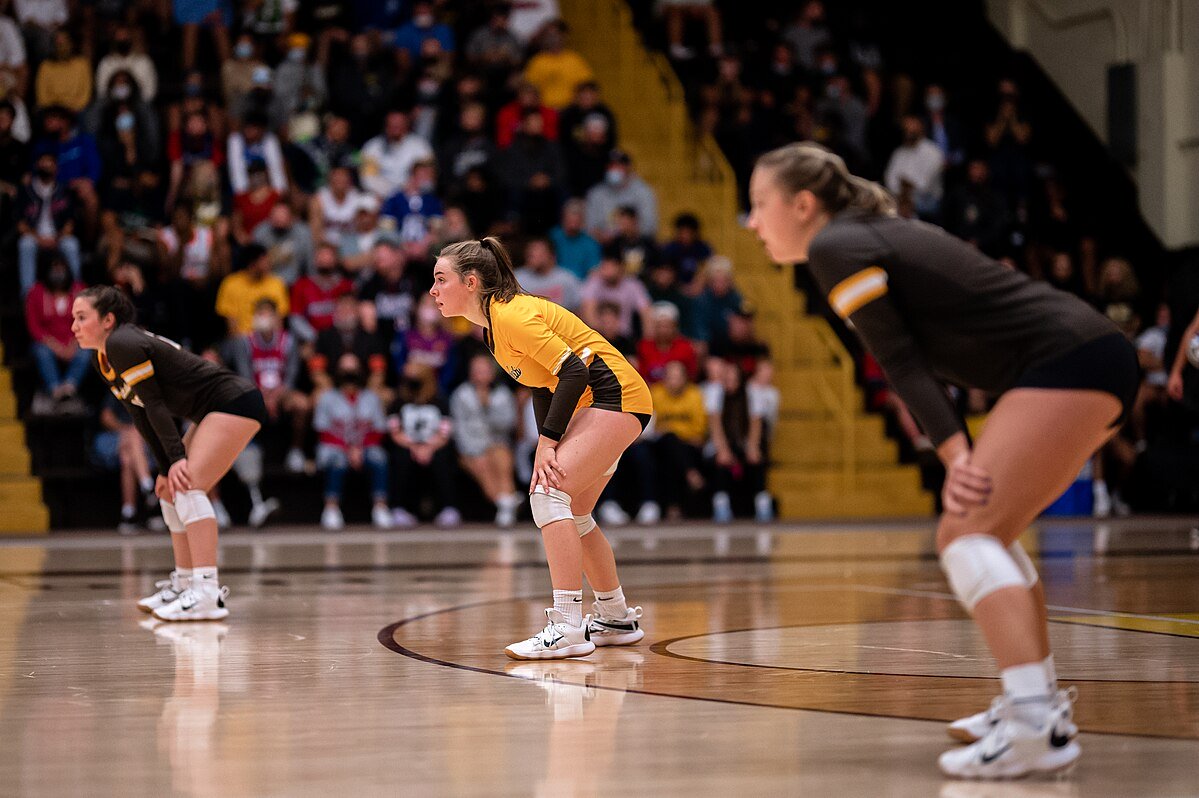 What's The Function Of Libero in Volleyball?
In fast-paced volleyball matches, it is crucial for officials to recognize and track the libero's substitutions to maintain the integrity of the game.
The distinct jersey color acts as a visual cue that alerts officials when a substitution involves the libero. (photo Erick Drost)
What's The Function Of Libero in Volleyball?
In fast-paced volleyball matches, it is crucial for officials to recognize and track the libero's substitutions to maintain the integrity of the game.
The distinct jersey color acts as a visual cue that alerts officials when a substitution involves the libero. (photo Erick Drost)3. Substitute Recognition:
The distinct jersey color acts as a visual cue that alerts officials when a substitution involves the libero.
4. Compliance with Rules:
The rules of volleyball-specifically outlined by the governing body, the International Volleyball Federation (FIVB) - specify that the libero must wear a jersey that is a "uniformly contrasting color" to their teammates' jerseys.
This rule ensures uniformity and compliance in the sport.
It is up to the organizing body or event officials to determine the acceptable colors and ensure they conform to the rules and guidelines.
By adhering to the libero's jersey color requirements and clearly tracking their substitutions, the sport can maintain fairness, transparency, and efficient game flow.
How Do Libero Volleyball Players Differ From Other Players?
The Libero Substitutions
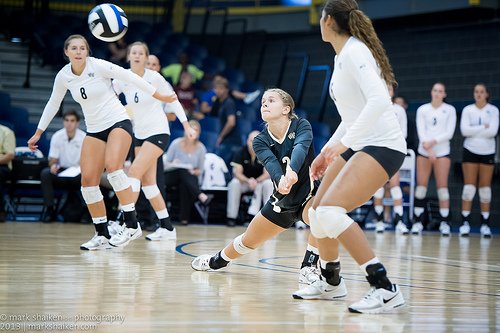 What's The Function Of Libero in Volleyball?
Since there are no limitations to the number of substitutions a libero can make, by wearing a different color jersey it's easier for the referee and stat keepers to keep track of the times the libero enters in and out of the game.
(photobyshakeskcmarkshaiken)
What's The Function Of Libero in Volleyball?
Since there are no limitations to the number of substitutions a libero can make, by wearing a different color jersey it's easier for the referee and stat keepers to keep track of the times the libero enters in and out of the game.
(photobyshakeskcmarkshaiken)The rules also state that each team is given a certain amount of substitutions they can use during a match.
Since there are no limitations to the number of substitutions a libero can make, by wearing a different color jersey it's easier for the referee and stat keepers to keep track of the times the libero enters in and out of the game.
The two key points that should be remembered about a libero going in and out of the game is that
a) there needs to be a rally between two libero substitutions and
b) once a libero goes in for one player, they can only continue
to go in and out for that same player.
They play a crucial role in the team's defensive strategy, allowing other players to focus on their specific offensive responsibilities.
What Are Some Common Misconceptions about the Function of Libero in Volleyball
1. Can a libero hit the ball?
Misconception: There is often confusion about whether a libero is allowed to hit the ball during a game.
Clarification: No, a libero is not allowed to jump and hit or attack the ball when and if positioned in the front row. The libero's primary role is focused on defensive skills, such as digging and passing, rather than offensive attacks.
2. What distinguishes a libero from other players on the court?
Misconception: Some individuals may not fully understand how the libero position differs from other players.
Clarification: The libero position has specific rules, responsibilities, and limitations that set it apart from other players on the court. They wear a contrasting color jersey, have different substitution rules, and are primarily focused on defensive duties, allowing other players to focus on their specialized roles.
3. Is the libero position limited to specific skill sets?
Misconception: There may be an assumption that liberos are only skilled in defense and lack offensive abilities.
Clarification: While the libero position is focused on defense, it does not mean liberos lack offensive skills. Liberos can still serve the ball effectively, contribute to offensive transitions with accurate passing, and strategically support their team's attacking strategies.
4. Can a libero play in any position on the court?
Misconception: Some may think that a libero can play any position on the court during a game.
Clarification: The libero is a specialized player who primarily plays in the backcourt and is limited to specific playing zones. They cannot play in the front row and are typically assigned to replace specific designated players, often middle blockers or back-row players, during substitutions.
5. Are there any limitations on the number of liberos a team can have?
Misconception: People may be unsure about whether there are any limitations on the number of liberos that a team can utilize during a game.
Clarification: Each volleyball team is allowed to have only one designated libero on the court during a match. This restriction ensures that the libero position maintains its specialized role and purpose in the game.
Let's Discuss More Specific Details on the Defensive Responsibilities of the Libero
The libero is a highly specialized player in volleyball who plays a crucial role in the team's defense.
Their main responsibility is to excel in passing and digging the ball, helping to keep the ball in play and set up successful attacks for their team.
The Function of The Libero in Serve Receive
In terms of serve receive, the libero is often responsible for taking the first serve. They are positioned in the back row, in the middle of the court or where the opposing server is most likely to serve, and are tasked with receiving the opponent's serve with precision and accuracy.
Their primary goal is to pass the ball accurately to the setter, in order to start a smooth first step for the team's offensive play.
The libero should have exceptional reading and anticipation skills to react quickly to the opponent's serve, adjusting their position accordingly to make a solid pass.
The Function of The Libero In Defense
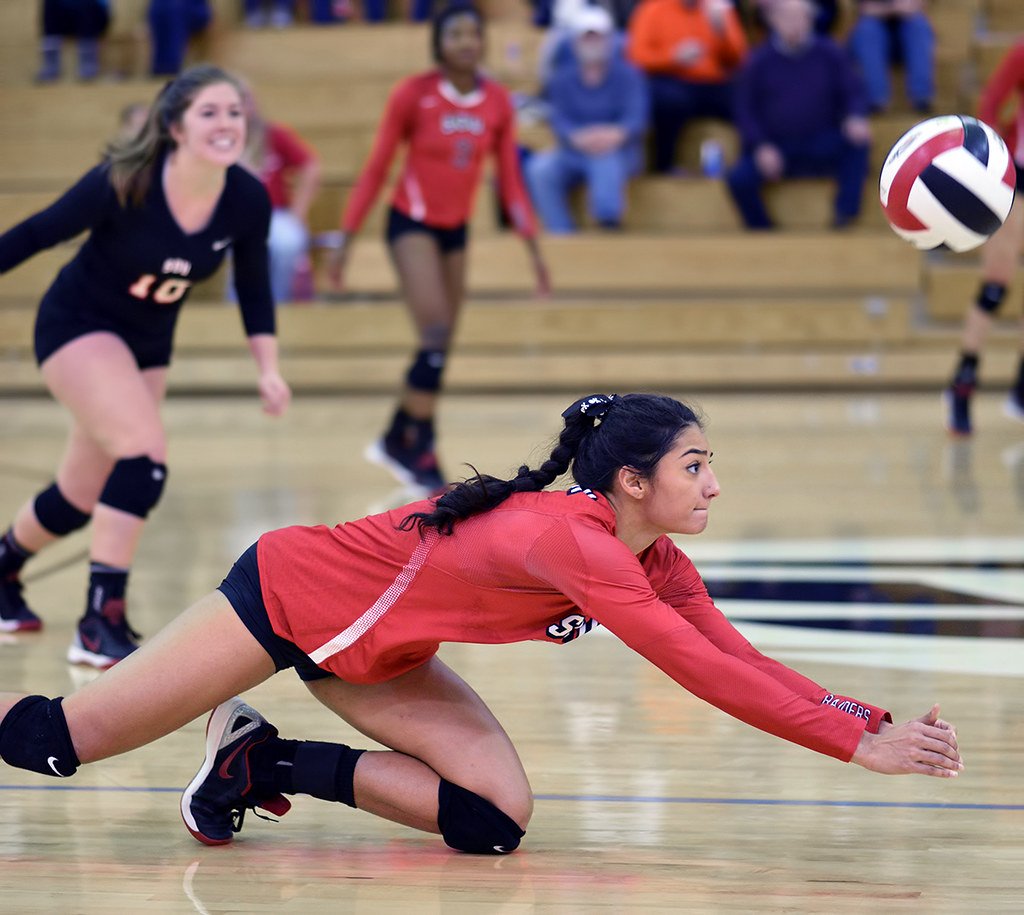 What's The Function Of Libero in Volleyball? The libero is primarily responsible for covering the middle-back or left back area of the court, but they must also be able to quickly move and cover other positions if needed.
(photo volleyball digging creative commons al case)
What's The Function Of Libero in Volleyball? The libero is primarily responsible for covering the middle-back or left back area of the court, but they must also be able to quickly move and cover other positions if needed.
(photo volleyball digging creative commons al case)Maintaining defensive positions is another crucial responsibility of the libero.
They need to be constantly aware of their positioning on the court and adjust it based on the opponent's attacking strategy.
Their agility, speed, and ability to move laterally are crucial in effectively covering the court and protecting against various attacking options from the opposing team.
The Function of the Libero With Controlling The Ball When Digging
Making accurate digs to keep the ball in play is one of the most vital aspects of the libero's defensive responsibilities.
Digs are defensive moves used to save the ball from hitting the ground after an opponent's attack.
They need to control the direction and trajectory of the ball to ensure it stays in play and is ready for the setter to set up an offensive play.
In summary, the libero's defensive responsibilities in volleyball include excelling in serve receive, maintaining proper defensive positions, and executing accurate digs to keep the ball in play.
Their role is essential in maintaining a strong defensive unit and setting up successful offensive plays for their team.
The libero's exceptional passing, defensive positioning, and digging abilities greatly contribute to the overall success of the team.
Frequently Asked Questions about the Libero Volleyball Player Position
Q: What is the role of a libero in volleyball?
A: The libero is a specialized player in volleyball who excels in defensive skills such as digging and passing. They primarily play in the backcourt and wear a contrasting color jersey to distinguish themselves from their teammates.
Q: When can a libero enter the game?
A: Liberos can freely enter and exit the game without counting towards traditional substitution limits. They typically replace a back-row player and play a crucial role in enhancing the team's defensive capabilities.
Q: Can a libero attack or hit the ball in the front row?
A: No, liberos are prohibited from hitting or attacking the ball in the front row. Their primary focus is on defense and setting when the setter digs a ball.
Q: What are the main skills that a libero should possess?
A: A good libero should have exceptional ball control, agility, and defensive skills. They should be quick and adept at reading the game, making accurate digs, and providing precise passes to set up their teammates for successful attacks.
Q: How does the libero position impact team strategy?
A: The libero's presence allows for optimized player rotations, heightened defensive strength, and smoother transitions from defense to offense. Their ability to specialize in defensive skills frees up other players to focus on their specific roles, improving overall team coordination.
Q: How has the libero position changed the game of volleyball?
A: The libero position has had a significant impact on volleyball by highlighting the importance of defense and spectacular defensive plays. It has created longer rallies, increased the strategic aspect of the game, and made matches more exciting for both players and spectators.
Q: Can a libero set the ball to any player on the court?
A: Yes, liberos can set the ball to any player on the court. However, they often focus on setting to the front or back row players when the setter is unable to do so.
Q: What is the purpose of the libero's contrasting color jersey?
A: The libero wears a contrasting color jersey to make them easily identifiable to the referee and differentiate them from their teammates on the court.
Q: Are liberos allowed to serve?
A: Yes, liberos are allowed to serve. They can utilize their defensive skills to make accurate and strategic serves, contributing to the team's overall performance.
Q: Can a libero be substituted for any player on the team?
A: Liberos are typically allowed to substitute for back-row players, often replacing a player who has rotated to the front row. The libero position provides flexibility in optimizing player rotations while maintaining a formidable defensive presence.
Remember, these answers provide a general overview of the libero position in volleyball. Rules and regulations may vary depending on the specific league or level of play.
Do You Follow Me on Pinterest?
 Private or semiprivate volleyball indoor/sand lessons are an excellent way for young Las Vegas high school volleyball players to quickly improve their individual skills through a private or semi-private coaching experience.
These lessons are conducted by former pro volleyball player, former USA Volleyball High Performance instructor and Evaluator and Tstreet Vegas 18s head Coach April Chapple on a weekly basis.
Sign up now!
Private or semiprivate volleyball indoor/sand lessons are an excellent way for young Las Vegas high school volleyball players to quickly improve their individual skills through a private or semi-private coaching experience.
These lessons are conducted by former pro volleyball player, former USA Volleyball High Performance instructor and Evaluator and Tstreet Vegas 18s head Coach April Chapple on a weekly basis.
Sign up now!Follow me on Pinterest Volleybragswag to improve your game even faster!
I share alot of individual, partner and easy-to-do volleyball serving drills we do in class with my followers.
Many of these volleyball practice drills you can do at home by yourself or try at your next practice with your teammates.
If you're a B team or JV player trying to make varsity next year...your goal should be to complete 1000 reps a day of at least three of the basic skills on your own...volleyball passing, serving and setting should be at the top of the list.
The Function of Libero in Volleyball:
Where Do You Go From Here?
Got you! Here's where you need to go now! Here are three options:
- Learn more about the various Positions in Volleyball by reviewing the Related Links below.
- Follow the suggested reading on our Sitemap page Learning How To Play (Sitemap)
- Or visit the pages in the Volleyball Positions section in the drop down menu at the top of the page.
If your athlete struggles with consistent serve receive, gets subbed out, or is overlooked for playing time—this is the fix you’ve been looking for.

Struggling with passing consistency?
I help talented passers tired of getting pulled from games because of inconsistent serve receive skills BUILD passing confidence without expensive private lessons using the same 3-step system that's helped dozens of my athletes get recruited.
Download my eBook for $17.99 and start building the passing confidence that keeps you on the court—and gets you seen by college coaches.
From Lady Vol to Legend: Coach April Produces Powerful Passionate Players...is that you?
What Are You Looking For?
Click to Download Your Pre Serving Ritual Mastery Checklist pdf:
🎯Volleyball Pre Serving Ritual Guide -
Players! Learn How To Transform Your Serve from Weak to Weapon
Click to Download Your Parent's Volleyball Serving Checklist pdf
🎯Parent's Volleyball Serving Checklist Guide
Parents! Help Your Player Develop Championship Serves (Even If You've Never Played)

Hi there!
Thanks for stopping by. Hope you learned something today that will help you reach your volleyball goals.
Be sure to subscribe to my email newsletter so you can learn more each week!
Stay strong! Stay motivated!
-Coach April

SUSCRIBE to my email newsletter below!
 Click to learn more about the weekly volleyball classes and clinics or email info@imrpoveyourvolley.com for information
Click to learn more about the weekly volleyball classes and clinics or email info@imrpoveyourvolley.com for informationCongratulations to my seven Boys-18s Vegas Volley club players who played in two state championship finals yesterday, the 3A and 5A State champinship finals at Sunrise Mountain High School.
TOURNAMENT CHAMPIONS!
A-1 Vegas Volley VBC
In It To Win It Tournament
May 2 - 4, 2025 Tournament
Gold Medalists
18s Premier Division
Vegas Volleyball's Unsung Heroes: Celebrating Moms with Peace Love Volleyball Shirts
Ready to energize your volleyball mom journey?
Subscribe to my 'Producing Powerful Passionate Peaceful Players' email list above on ImproveYourVolley.com.
You'll receive energy-boosting tips, exclusive insights from me, Coach April Chapple on maintaining momentum in volleyball.
Let's power up the Vegas volleyball scene together!
Recent Articles
-
3 Beach Volleyball Hand Grips How Do You Hold Your Hands When Passing?
Dec 20, 25 05:32 PM
The purpose of the volleyball hand grip you use to pass a ball is to help keep your elbows straight and to insure you have a very flat and wide a platform. -
5 Essential Serving Tips from Tennessee's #2 Career Aces Record Holder
Dec 09, 25 11:39 PM
I've identified the 5 essential serving tips that separate confident servers from struggling ones and you'll serve with the confidence that creates aces -
The Volleyball Toss How Consistent Is Your Ball Toss Before You Serve?
Dec 07, 25 12:29 AM
The volleyball toss for the overhand serve needs to consistently be two feet up in the air and one foot in front of front foot which puts the ball in front of your serving arm.
